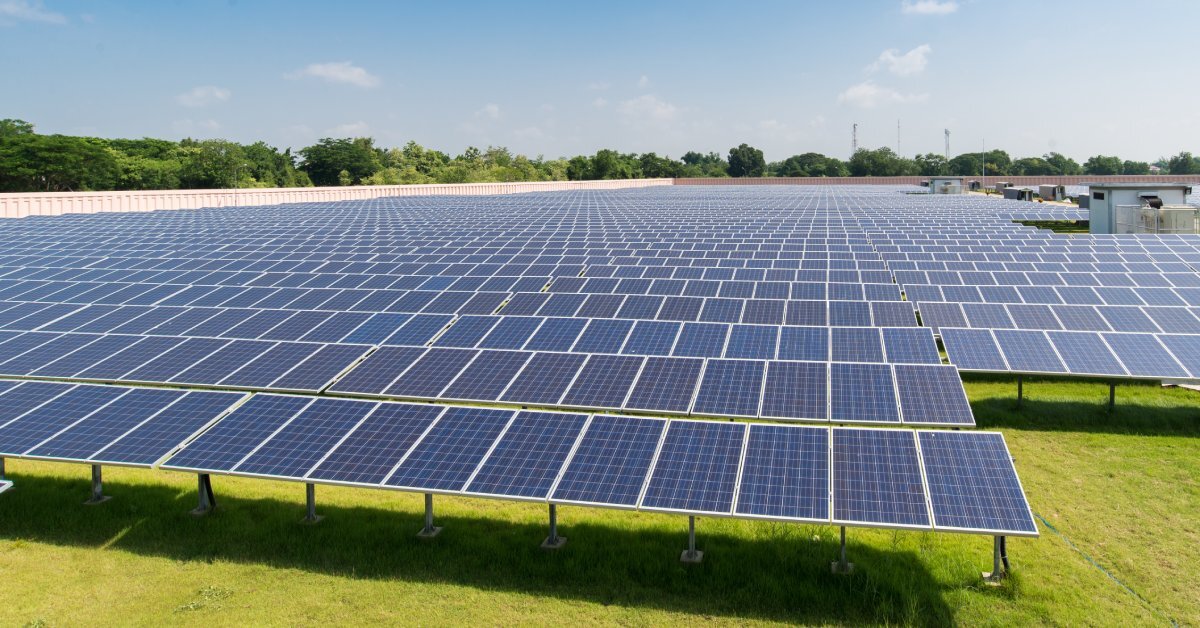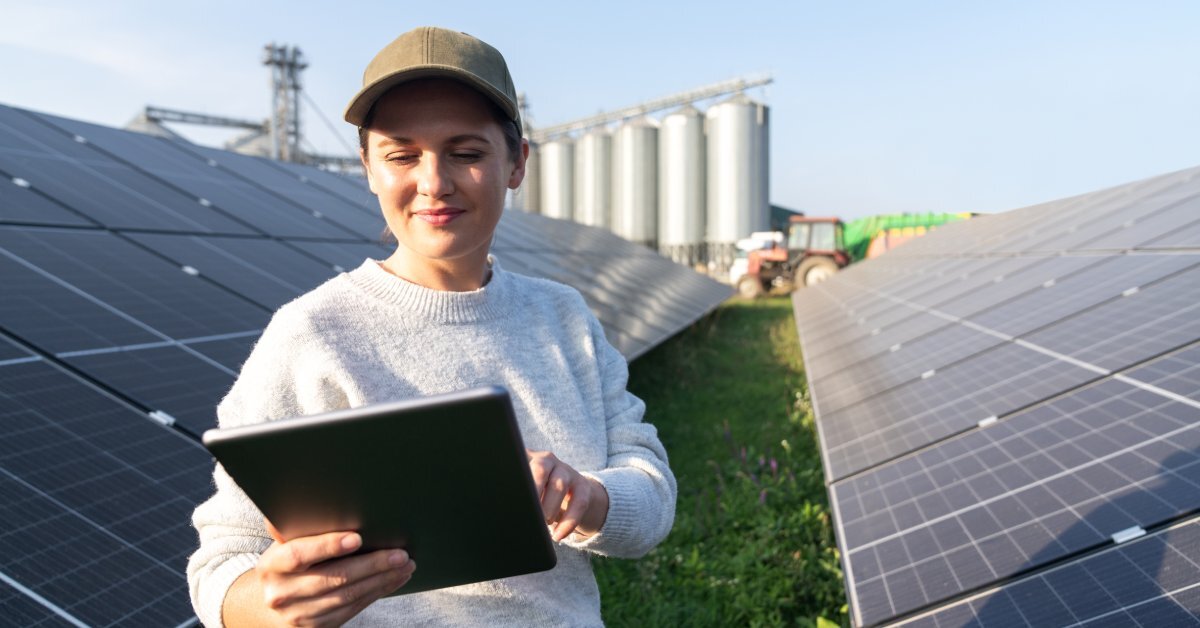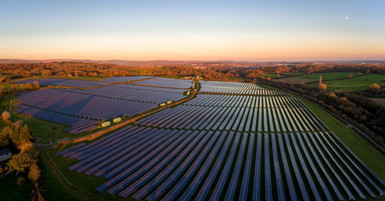Jun 2nd 2025
Designing Off-Grid Solar Projects for Remote Areas
Investing in solar energy for remote areas has an extraordinary benefit: providing reliable access to electricity where traditional grids fail. These areas are extremely vulnerable when the electrical grid falters, so backups like solar farms can provide a safety net to keep power going. However, designing off-grid solar projects in remote areas efficiently and sustainably requires careful planning to meet the unique challenges of these spaces.
What Is an Off-Grid Solar Project?
An off-grid solar project, also called an independent solar power system, operates outside the traditional electricity grid. The system uses photovoltaic (PV) solar panels to generate electricity, which is stored in batteries for later use. A solar inverter converts the stored energy into usable electricity for various appliances and devices.
Components of an Off-Grid Solar Project
The main component is the large solar panels that capture sunlight and convert it into electricity. Connected to the solar panels are charge controllers that regulate the charging and discharging of batteries to prevent overcharging. Battery storage collects energy in dark or cloudy conditions, while power inverters convert direct currents into alternating currents for appliances.
Backup generators are an optional addition to the system. They provide extra power in case of cloudy weather or unexpected energy shortages. Each element of a solar project must have a solar label to identify its electrical components and potential hazards for site safety.
Challenges of Designing Solar Projects for Remote Areas
The benefits of solar projects in remote areas are a vital safety net for communities in these regions. However, even with these benefits, there still exist challenges requiring innovative solutions.

Access to Infrastructure
Remote regions often lack basic infrastructure, including paved roads and transport facilities, making delivering materials difficult. Solar panels, batteries, and other equipment must be easily transported to these locations to maintain efficient installations.
Partnerships with local communities and utilizing advanced technologies for transportation can help mitigate these logistical barriers. Overcoming these obstacles ensures reliability and sustainability in even the most isolated areas.
Weather and Environment
Harsh weather conditions, such as heavy rain, high winds, or extreme heat, can impact system performance and longevity. Dust and debris buildup on solar panels can cause concern in arid regions. Coupled with the struggles to manage maintenance without reliable infrastructure, intense weather can damage solar projects.
Regular maintenance and innovative engineering solutions are critical to address these challenges. For instance, self-cleaning coatings and automated cleaning systems can reduce the accumulation of dust and debris, improving efficiency.
Limited Technical Expertise
Remote communities often lack people with the technical expertise to install, operate, and maintain solar farms. Budgeting for these designs must include training and user-friendly technology to incorporate residents into the work.
Enticing skilled employees to move to these remote areas can help address the technical expertise shortage. If companies offer extra funds or incentives to skilled workers, they may consider maintaining the solar farms and training others to understand them.
Budget Constraints
Funding for remote solar projects is often tight. Efficient use of resources and cost-effective designs are critical for success. Utilizing affordable yet durable materials and opting for modular designs for phased implementation can lower initial expenses. Additionally, seeking partnerships with nongovernmental organizations, crowdfunding initiatives, or grants can provide vital financial support.
Step-by-Step Design Process
A well-structured step-by-step design process is crucial to successfully implementing a solar energy project. By following a systematic approach, stakeholders can optimize resources, mitigate risks, and achieve maximum efficiency.
Step 1: Assess Energy Needs
The first step is evaluating the energy requirements of the site you’re designing for. This means asking critical questions like, “How many buildings require electricity?” or “What devices and appliances should be powered?” These questions can help you understand what kind of setup is needed for the solar project to be successful.

Step 2: Evaluate Local Solar Resources
Solar insolation levels differ by region, and understanding these levels is essential for panel placement and system efficiency. Solar mapping can assist in estimating how much light is available in the area and whether that will be enough to support the local community’s needs with the solar project.
Step 3: Select the Right Components
Once you know the energy needs of the community and the solar output potential for a location, you can look into what components will best fit the project. For solar panels, select durable materials that can withstand harsh conditions and high wattage to provide maximum energy capture.
The battery bank you choose should be large enough to store excess energy during cloudy days or prolonged outages. Charge controllers are also important, so select one that maximizes energy transfer from the panels to the batteries.
Step 4: Design the Panel Layout
The layout of the solar panels determines the efficiency of energy capture. Prioritize an unobstructed view of the sun. Based on the latitude of your location, adjust the tilt angle of the panels to optimize solar capture year-round.
Step 5: Integrate Backup Solutions
For areas prone to inconsistent weather, consider a backup generator or additional battery storage for power continuity. This way, you can rely on consistent electricity for the community, even in severe weather that leaves solar panels without power.
Step 6: Plan for Installation and Maintenance
Account for transportation logistics when delivering materials to remote areas. Use modular equipment that’s easy to assemble onsite. Once given hands-on training to operate and maintain the system, local community members can provide extra workers.
Employees must monitor systems once installed to track performance and identify issues quickly. Fast responses can limit the damage of faulty technology and allow the system to restart right away after fixing the problem.
Delivering Impact With Sustainable Designs
Designing off-grid solar projects for remote areas is not just a technical endeavor but a meaningful way to improve lives. By providing a reliable, renewable energy source, you can empower communities with the tools they need to thrive.
To make your solar project compliant, efficient, and professional, partner with Get Solar Labels for high-quality solar labels. By sourcing your solar labels from a trusted provider, you can enhance the reliability and organization of your off-grid solar projects. Contact us to learn more about incorporating solar labels into your project.

